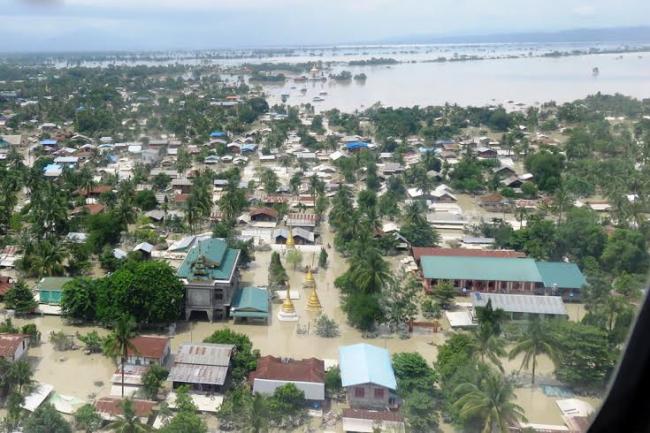08 Aug 2015, 07:06 am Print

“These funds will help provide people with emergency shelter, safe water supply, sanitation, food, critical health care and other services, at a time when they are in desperate need,” Under Secretary-General for Humanitarian Affairs and Emergency Relief Coordinator Stephen O’Brien said in a press release.
“However, additional funding sources continue to be urgently needed as aid operations in Myanmar remain critically underfunded,” he added.
The money released from the UN Central Emergency Response Fund (CERF) will enable aid organizations to rapidly scale up their response and provide life-saving assistance to some 160,000 people in Rakhine and Chin states, and in the Sagaing and Magway regions.
Aid agencies estimate that at least $47 million is required for the emergency response, but the number of affected people and the needs are expected to rise as the situation evolves.
This funding requirement for the floods response is in addition to the $190 million Myanmar Humanitarian Response Plan for this year, which has been 39 per cent funded so far.
The UN and its partners have been stepping up their support to the response being led by the Myanmar authorities, civil society groups, local organizations, and the Myanmar Red Cross Society.
“Now that humanitarian staff are able to reach the most critical areas, we are doing everything in our power to assist the authorities in bringing people the aid they desperately need,” said Eamonn Murphy, the Acting UN Resident and Humanitarian Coordinator in Myanmar.
While the weather has improved, water is now flowing south towards the Bago, Ayeyarwady and Yangon regions and there are concerns that river levels will rise and cause flooding in new areas.
“The poorest children and families are going to be the hardest hit, and we need to build their resilience so they can cope with these kinds of crises,” said Shalini Bahuguna, the Acting Representative of the UN Children’s Fund (UNICEF) in Myanmar.
“The humanitarian response at the moment is prioritizing immediate life-saving needs, but as the waters recede and people return home, the international aid community will shift its focus to help communities rebuild their lives and livelihoods over the next weeks and months,” added Murphy.
Photo: Khin Khin Aung/WFP
- Catastrophe alert: UN warns Asia is facing unprecedented cyclones and rainfall
- Catastrophe alert: UN warns Asia is facing unprecedented cyclones and rainfall
- India’s West Coast Turns Protector: Whale Shark Rescues Surge from Gujarat to Kerala
- Belém COP30 announces major climate finance boost
- Three dead after magnitude 5.7 earthquake hits Bangladesh, strong tremors felt in Kolkata



-1763561110.jpg)


